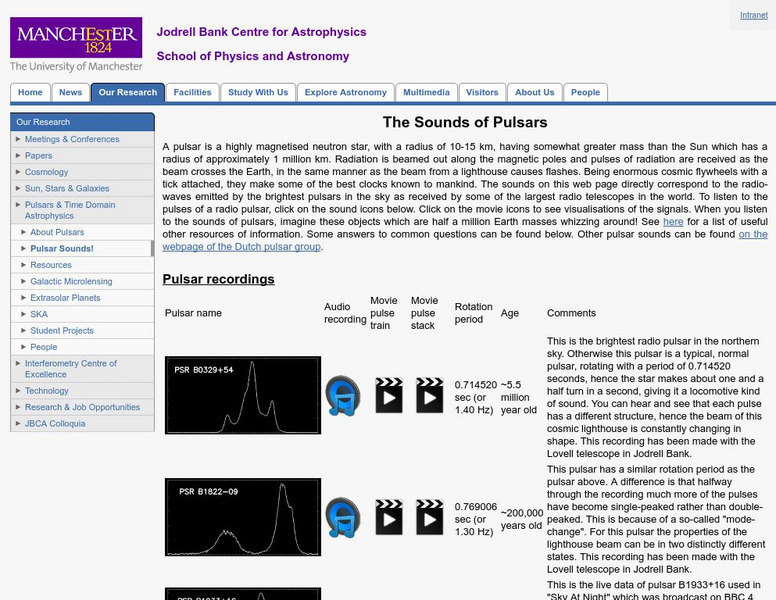NASA
NASA | GLASTcast 2008 Mission Update
The GLAST mission launched on June 11, 2008 and has been returning remarkable and revolutionary discoveries ever since. Recently renamed to the Fermi Space Telescope, after Nobel Prize winner Enrico Fermi, the mission is expected to...
Curated Video
Neutron Stars Explained in Simple Words for Laymen
Neutron stars are formed from the core of some starrs. Neutron stars generally have a radius of only around 12 km. With masses exceeding 1.4 times that of the Sun, these are some of the densest objects in the Universe. A tablespoonful of...
Next Animation Studio
Einstein’s theory of relativity passes major test
Einstein’s theory of relativity has passed a huge test involving pulsar stars — extremely dense neutron stars that emit beams of radiation and particles from their magnetic poles.
NASA
NASA | What is a Pulsar?
A pulsar is a neutron star that emits beams of radiation that sweep through Earth's line of sight. Like a black hole, it is an endpoint to stellar evolution. The "pulses" of high-energy radiation we see from a pulsar are due to a...
TMW Media
The Very Large Array Telescope: The purpose and characteristics of the VLA
What is the purpose of the VLA? What astronomical objects do they observe? Why was the VLA renamed Carl G. Jansky Very Large Array? What are the characteristics of the antenna? The Very Large Array Telescope, Part 1
Curated OER
Galaxies, Part 1 of 3
You've found part one of a three-part series entitled "A Practical Guide to the Universe." Hosted by Tom Selek, this older clip shows, describes, and invites viewers to think about what galaxies are. The color, motion, and brightness of...
NASA
Science Casts: Mysterious Objects at the Edge of the Electromagnetic Spectrum
NASA's Fermi Gamma-Ray Telescope is finding hundreds of new objects at the very edge of the electromagnetic spectrum. Many of them have one thing in common: Astronomers have no idea what they are. [3:27]
Crash Course
Crash Course Astronomy #32: Neutron Stars
Neutron stars are incredibly dense, spin rapidly, and have very strong magnetic fields. Some of them we see as pulsars, flashing in brightness as they spin. Neutrons stars with the strongest magnetic fields are called magnetars, and are...
University of Manchester
Jodrell Bank Centre for Astrophysics: The Sounds of Pulsars
Defines pulsars and provides examples of their actual sounds recorded with radio telescopes.
Science Friday Initiative
Science Friday: Pulsar Pulverizes Incoming Asteroids
A pulsar 37,000 light-years from Earth collided with a billion-ton asteroid.





